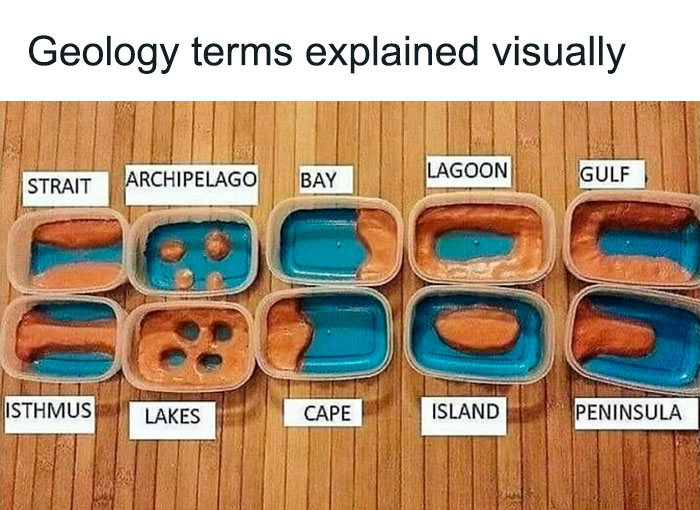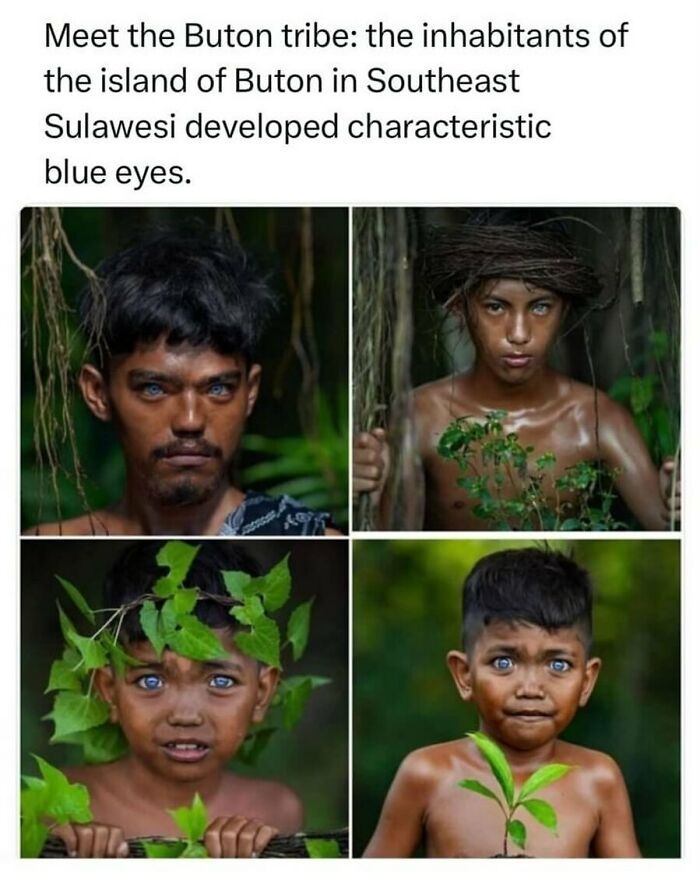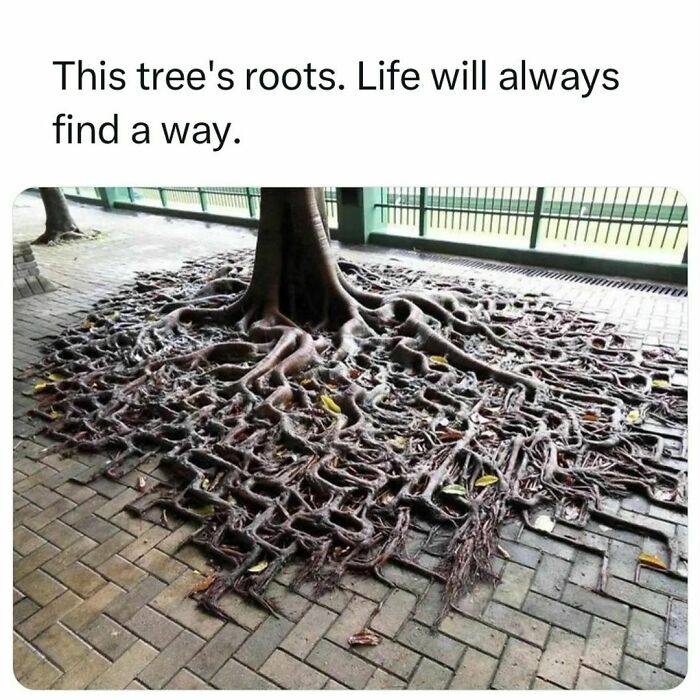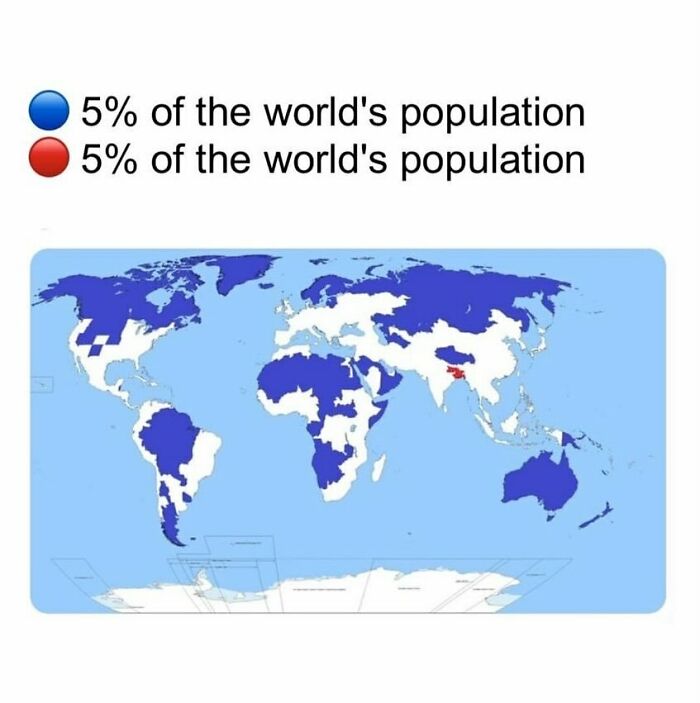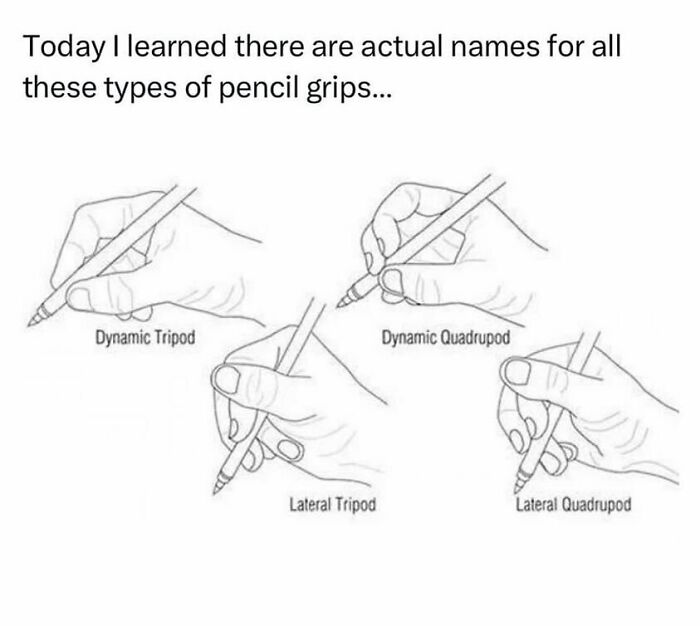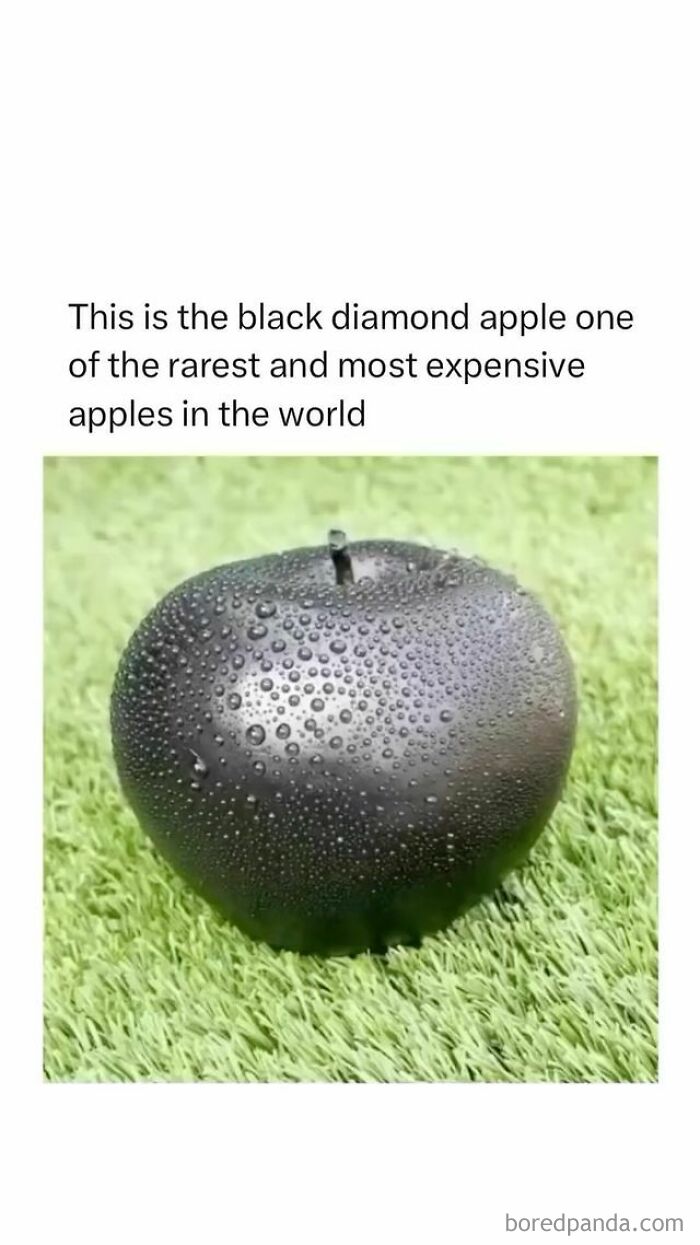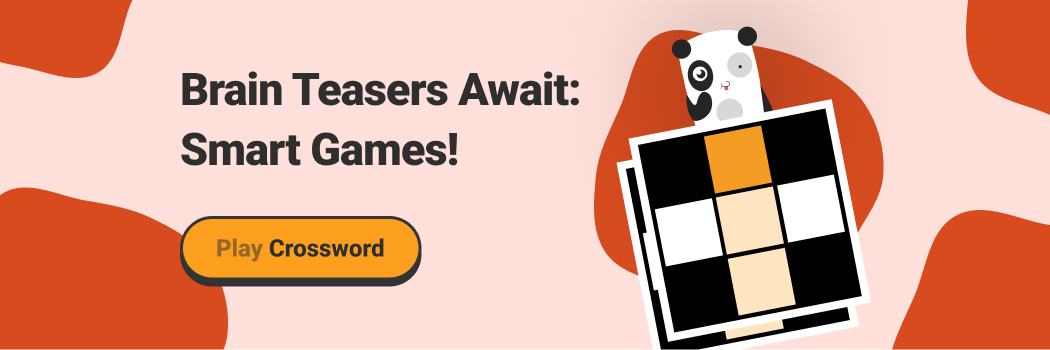Information online doesn’t always have to be valuable to gain attention. Trivia also draws a lot of curiosity, and a good example is the How Everything Works Instagram page.
The account has nearly four and a half million followers. It features images containing random facts about different facets of life, from 400-year-old ocean predators to rare, expensive fruits. The posts are entertaining and informative; you will likely learn something new.
This post may include affiliate links.
For some experts, there is power in knowing what is deemed useless, trivial information. According to product design veteran Stephen Marshall-Rees, staying curious can enhance our problem-solving skills.
"What may seem trivial or irrelevant today could be the key to unlocking tomorrow's breakthroughs," he wrote.
"A butterfly wing transplant is a delicate procedure carried out to repair a butterfly’s damaged wing, enabling it to fly again. This involves carefully removing the damaged part of the wing and replacing it with a similar piece from a donor butterfly of the same species, typically one that has died naturally. The donor wing is usually attached with a light adhesive, like a non-toxic glue.
This kind of procedure is most likely to be successful on larger butterfly species, such as Monarchs, where the size of the wings makes the process easier.
However, it requires an understanding of the butterfly’s anatomy, extreme precision, and a gentle hand, due to the delicate nature of the wings and the scales that cover them."
Humans seem naturally drawn to facts that won’t necessarily add value to our lives. Some are even willing to endure slight pain to know useless information.
University of Melbourne psychologist Stefan Bode conducted a study in 2021 in which he showed participants a series of coin flips. Each side of the coin had a small monetary reward, but the participants were unaware of which ones came with the prize.
"Researchers have observed a male Sumatran orangutan, Rakus, using medicinal herbs to treat a facial wound, suggesting orangutans possess advanced cognitive abilities.
Rakus chewed leaves from the Fibraurea tinctoria plant, known for its medicinal properties, and applied the juice directly to the wound, which subsequently healed.
This marks the first documented instance of a wild animal using a plant with known medicinal properties to treat an open wound.
The findings offer insights into the origins of human wound care, possibly dating back to a common ancestor shared with these primates."
"Beavers are known for their ability to transform ecosystems by building dams and creating wetlands. In Nevada, beavers have been instrumental in restoring the desert river ecosystem by creating a series of dams that slow the flow of water and allow it to spread out, which helps to replenish groundwater and create areas of wetland habitat. These wetlands can support a variety of wildlife, even during times of drought, and play a crucial role in maintaining the overall health of the ecosystem. The work of beavers in creating these wetlands can have far-reaching positive impacts on the local environment, including providing habitat for various species and improving water quality."
Bode then made an offer: participants would know the payouts of each coin flip. But in exchange, they would have to endure a brief but harmless flash of heat to the forearm.
Knowing how much they were getting did not affect the outcome of the coin flip, and they would earn the same amount regardless of whether they knew the values.
"A knife makes a straight cut, but paper acts like a saw blade and does more damage to nerve endings. Paper also leaves behind tiny fibres, irritating the wound even more"
And reduces vehicle damage due to impacts. But we can't be having nice things, now!
The results were telling. In 75% of the experiments, participants were willing to handle the flash of heat to the forearm if it meant knowing how much the payouts were. And when the amounts increased, so did their willingness to endure more pain.
"Jonathan, a Seychelles giant tortoise, is estimated to have hatched around 1832, making him the oldest known living land animal at about 191 years old.
Residing on Saint Helena, he was brought there in 1882 and named in the 1930s. Jonathan continues to live at Plantation House, cared for by the government.
Despite his age, he remains active and spends his days with his mate Frederik. Jonathan’s remarkable longevity has garnered media attention and even royal visits, including from Prince Edward, Duke of Edinburgh, in January 2024."
Reminds me of the Galapagos Tortoise named Harriet who was owned by both Charles Darwin and Steve Irwin.
"Farmers put earmuffs on calves during the winter to protect them from the harsh cold and prevent frostbite.
These young animals are particularly vulnerable to the cold due to their age and size, requiring additional measures to ensure they remain warm during the winter months."
University College London neuroscientist Tali Sharot was amazed at the lengths certain people would go to for the sake of knowing something trivial. According to her, the value of information increases with higher uncertainty.
“Humans value information even when they cannot use it to change outcomes,” she pointed out.
Author Scott H. Young encourages continuous learning because it shapes one's view.
“Even if ideas can’t make you money, friends, or a six-pack, it can still make your model of reality a little more accurate. And an accurate model of reality is useful to have, even if any particular idea that helps you form it is not,” he wrote in an article.
"Scientists have discovered reindeer use a special form of night vision to help them find food in the colder months.
The surface of their eye changes from golden-orange in summer to a rich blue colour in the winter.
Experts think their vision might have evolved to help them see in snowy conditions and explains why they are able to see food so well in the dark."
"After the Hiroshima, Fukushima, and Chernobyl nuclear disasters, fields of sunflowers were planted across the affected landscapes to help absorb toxic metals and radiation from the soil. New research now suggests that sunflowers (Helianthus) might be as good for the environment as they are pretty to look at."
A question. After they've absorbed the radiation, what happens to it when they die?
"That nodosaurid, described in 2017, is a mummy: the Tutankhamen of the dinosaurs. Its exceptional state of preservation after 112 million years makes it one of the most fascinating jewels of paleontology, one that allows researchers to study one of the most intriguing processes of fossilization: natural mummification."
I'm so tired I accidentally read that as noodlesaurus and for a split second I thought to myself "What a delightful name!"
"Schizophrenia is a serious mental disorder in which people interpret reality abnormally.
Schizophrenia may result in some combination of hallucinations, delusions, and extremely disordered thinking and behavior that impairs daily functioning, and can be disabling."
"In case you need more explanation, a cape is a point of land projecting into a body of water while a bay is and area of water surrounded by land on three sides."
Hey bay, what a nice cape. Let me get strait to the point, isthmus tell you that I love your lagoon.
"A village in the Italian Alps is finally basking in winter sunlight thanks to a giant mirror installed on a mountain top to reflect the sun’s rays into the main square.
Viganella, with a population of less than 200, lies in a valley so steep that each year from November 11 to February 2 it hardly receives any sunshine.
That was until Mayor Pierfranco Midali decided to do something about it.
Now a 5-metre (16-foot) high, 8-metre (26-foot) wide mirror tracks the sun’s movement and reflects its rays into Viganella’s historic piazza.
The mirror, which cost around 100,000 euros (67,000 pounds), was unveiled on Sunday to the delight of the inhabitants."
Installed in 2006 for 100k €. It was the first of its kind, followed a few years later by another town in Norway who did the same after the success demonstrated. Despite being under a 30-years warranty, the mirror electronic motion control broke in 2023, after a lighting strike. They are currently repairing it, a feat that is not so straightforward due to some quirks in the design and construction of the control unit for the device. Hopefully it will return in operation before the next scheduled operation period (November-February)
Not everything we learn in school has a practical application. But all those tedious activities are also a form of practice when entering the real world. Cognitive psychological scientist Dr. Cindy Nebel explains how.
“It’s also possible that one day in the future, that student may need to sit through a truly pointless meeting, one that does not affect them in any way,” Dr. Nebel wrote. “Wouldn’t it be great for them to have some practice appreciating the information set before them, trying to make it relevant to their own lives, or simply appearing engaged?”
"To Mountain Gorillas, anyone who keeps direct eye contact is a challenger and an enemy who has come to disrupt the family. Direct eye contact will, therefore, trigger the silverback to charge and fight you in defense of his family. If you want peace with Gorillas, avoid direct eye contact."
These glasses were given to visitors of the Rotterdam Zoo Blijdorp. One of the Gorillas was Bokito. A woman thought she bonded with the beast but in fact he was quite annoyed by her. He escaped from his enclosure and roamed the zo until he was sedated. The woman was gravely hurt with bitemarks everywhere. Since then people were given these glasses in order to not make direct eye contact. Sadly Bokito died last year.
Since this list is all about “useless” but interesting facts, here’s one about sharks. According to the US National Oceanic and Atmospheric Administration (NOAA), these ocean predators occasionally enter a daze.
“When you flip a shark upside down, they go into a trance-like state called tonic immobility. This is the reason why you often see sawfish flipped over when our scientists are working on them in the water.”
There is also a four digit code that tells when the tire was made, by week and year. For example, this tire was made in the 16th week of 2015, April 13th-19th. tire-date-...ba1ee0.jpg 
They forgot Gatorade & other “hydration” drinks. I suppose the display sacks weren’t big enough. Also, I’m pretty sure most of us know know vodka is sugar-free, so there was no need to include it.
"Baby owls sleep face down because their heads are too heavy. Snopes spoke with Denver Holt, researcher and founder of the Montana-based nonprofit Owl Research Institute, who said that while this behavior has been observed in owl chicks living in captivity, it is not common."
This is false. Their neck muscles have sufficient strength. Scientists don’t really know why they sometimes position themselves like this.
"They’re called crinkle crankles. A single leaf wall over that distance would need brick piers approx every 1.5-2m if it was a retaining wall it would need to be at least 9” wide (2 bricks). The crinkle crankle has more strength due to it’s curved nature so can be 4” wide or a single leaf of bricks. For the maths if we can assume they’re true semi-circles then each semi circle would be 1/2piD or 1.57D whereas a double leaf wall would be 2D for the same length D Therefore using 21.5% less bricks than a double leaf wall hope that clears things up"
Reminds me of the snake rail fences we have here in America.
"Puffer fish range in size from the 1-inch-long dwarf or pygmy puffer to the freshwater giant puffer, which can grow to more than 2 feet in length. They are scaleless fish and usually have rough to spiky skin. All have four teeth that are fused together into a beak-like form"
"The life cycle of a strawberry plant typically begins with the germination of seeds or the planting of runners. From there, the plant grows into a mature plant with leaves, flowers, and fruits. After pollination, the flowers develop into strawberries. Once the fruits are harvested, the plant continues to grow, producing new runners and potentially new plants, completing the cycle."
And when it gets to that final, perfectly ripe stage, the local birds or slugs get to it before you do.
Comets apparently smell like rotten eggs, burning matches, urine, and almonds. While it can be challenging to prove, the chemical components may give an idea.
Here’s an explanation from BBC’s Science Focus Magazine: “Traces of hydrogen sulfide, ammonia, sulfur dioxide, and hydrogen cyanide were all found in the makeup of the comet 67P/Churyumov-Gerasimenko.”
"Dr. Gary Greenberg’s photographs magnify grains of sand 100 to 300 times, exposing swirling microscopic shells, eroded crystals and colorful coral fragments."
This is fake sadly, these sand grains are actually known as coral sand which look cool, but most types of sand from pretty much every beach dont look like this
"Candelabra cactus sounds like a cactus and looks like one, but is actually a euphorbia. Its botanical name is euphorbia ingens. Ingens in Latin means “massive” or “extraordinary,” and indeed, Euphorbia ingens can eventually become a massive 30 foot plus tree spreading equally as wide. However, it can take 20 years for the plant to reach that point under ideal conditions, making it accessible for many people to enjoy in smaller spaces for a long period of time."
it looks like a tug boat by comparison, amazing it used to be the largest of its kind back then!!
"Bagworm caterpillars are known for their unique behavior of carrying logs to construct their protective cases. They use silk produced by specialized glands to attach these materials together, forming a sturdy and camouflaged shelter.
The process typically involves the caterpillar cutting small pieces of vegetation, such as twigs, leaves, and bits of bark, and then attaching them to its body with silk. As the caterpillar grows, it continues to add more material to its case, which can become quite large in size relative to the caterpillar itself."
"An ancient Maya ceramic figurine with a removable helmet, dating back approximately 1,500 years, discovered in El Perú-Waka’, Petén, Guatemala. The figurine is a testament to the advanced craftsmanship and the cultural significance of attire and equipment in Maya civilization. The removable helmet indicates a possible ritualistic or societal status usage, reflecting the complexity of Maya social structures and their ritualistic practices. Such artifacts are invaluable for archaeologists to decipher the societal norms, roles, and beliefs of ancient civilizations."
Action figures with removable helmets always had a special appeal to me. So cool
I imagined an artist going " look at this cool figure i built for my son" and archeologists overthinking it.
Load More Replies...Guatemala is a hidden gem, amazing history and topography. I learned Spanish there.
" ritualistic practices" is a term for they have no idea why so we just say this.
Jep. Everything tends to be ritualistic. That dagger made out of massive gold and sprinkled with jewels? Useless in battle so must be ritual and not, let's say a rich guy flexing his wealth. The figurine with removable helmet? Ritualistic! Not a kids toy.....
Load More Replies...Just how can this not point to Aliens among them. . .? Especially when there have been no examples of such a helmet used by the Mayans!
looks like the crossing guard at the elementary school down the street,
"Meteors appear in different colors, depending on the chemical composition of the space rock and the air it is passing through. A meteor with high iron content, for instance, will appear yellow. A meteor with high calcium content may appear as a purple streak of light."
"His shoulder touched a live wire and the current passed through his entire body, including the optic nerve, which connects the eye to the brain. The effect was two bizarre star-shaped electrical burns in his eyes, according to The New England Journal of Medicine."
"The Tsar Bomba mushroom cloud was approximately 25 miles wide at its base and over 40 miles high!!"
And the Tsar Bomba could have been twice as large if they had changed the tamper out. The actual yield was 57MT but the estimated yield with a uranium tamper was 110MT. The Teller Ullman model is theoretically infinitely scalable so sleep well folks.

 Dark Mode
Dark Mode 

 No fees, cancel anytime
No fees, cancel anytime 





































